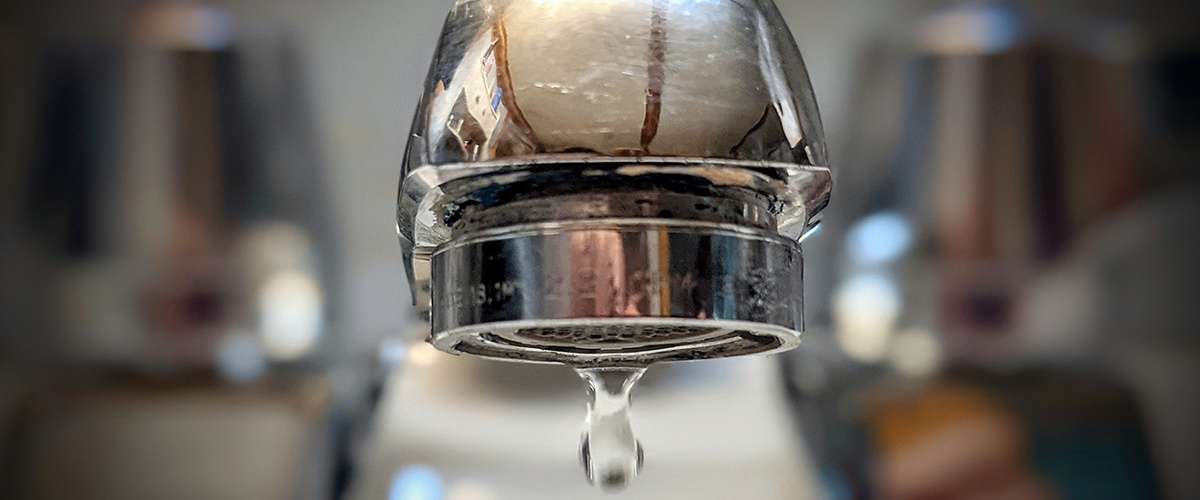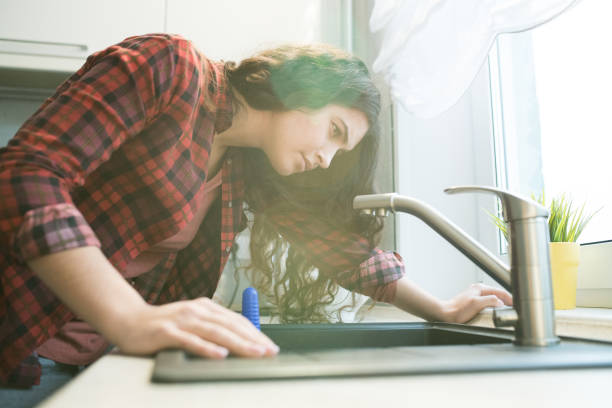How It's Critical to Resolve a Dripping Faucet
How It's Critical to Resolve a Dripping Faucet
Blog Article
We have unearthed this post involving Why Are My Faucets Dripping (And Can I Fix It Myself)? directly below on the web and thought it made good sense to discuss it with you on this page.

Leaking taps might appear like a small hassle, yet their influence goes beyond just the nuisance of the noise. From drainage to sustaining unnecessary monetary costs and health and wellness dangers, overlooking a dripping faucet can result in different consequences. In this short article, we'll look into why it's essential to resolve this usual house concern without delay and efficiently.
Wastefulness of Water
Ecological Effect
Leaking faucets contribute significantly to water wastage. According to the Epa (EPA), a solitary faucet dripping at one drip per secondly can throw away greater than 3,000 gallons of water annually. This not just stress water sources but also impacts environments and wildlife based on them.
Financial Expenses
Increased Water Expenses
Past the environmental impact, leaking taps can inflate water bills significantly. The gathered wastage gradually converts into higher utility expenses, which could have been prevented with timely repair work.
Prospective Home Damage
Additionally, extended dripping can result in damage to components and surface areas surrounding the faucet. Water accumulation can create discoloration, rust, and also structural concerns if left neglected, leading to extra repair service expenses.
Wellness Problems
Mold And Mildew and Mold Development
The consistent presence of moisture from a dripping faucet creates a perfect environment for mold and mold development. These fungis not only compromise indoor air top quality yet likewise posture wellness dangers, particularly for individuals with respiratory system problems or allergies.
Waterborne Diseases
Stationary water in leaking taps can end up being a breeding ground for germs and various other virus, raising the danger of waterborne illness. Pollutants such as Legionella bacteria grow in stagnant water, possibly causing serious ailments when ingested or inhaled.
Do it yourself vs. Professional Repair service
Pros and Cons of Do It Yourself Fixing
While some may try to take care of a dripping faucet themselves, do it yourself fixings come with their own collection of difficulties. Without correct expertise and tools, DIY attempts can exacerbate the issue or result in incomplete repair services, lengthening the trouble.
Advantages of Working With a Specialist Plumber
Working with a specialist plumber makes sure that the underlying root cause of the leaking faucet is dealt with efficiently. Plumbing technicians have the know-how and equipment to diagnose and fix faucet issues efficiently, conserving time and lessening the risk of additional damage.
Step-by-Step Overview to Taking Care Of a Dripping Tap
Tools Called for
Before trying to repair a trickling tap, gather the needed tools, consisting of an adjustable wrench, screwdrivers, substitute parts (such as washers or cartridges), and plumber's tape.
Usual Faucet Issues and Their Solutions
Recognize the type of tap and the specific problem creating the drip. Common issues include damaged washing machines, corroded valve seats, or malfunctioning O-rings. Refer to maker guidelines or online tutorials for detailed advice on repairs.
Preventive Measures
Routine Maintenance Tips
To stop dripping taps, perform regular maintenance such as cleaning up aerators, checking for leakages, and changing damaged components immediately. Additionally, consider mounting water-saving gadgets or upgrading to more effective components.
Significance of Prompt Services
Dealing with leaking taps as soon as they're noticed prevents more water waste and prospective damage, ultimately conserving both water and money over time.
Effect On Building Worth
Perception of Well-Maintained Property
Keeping a residential property in good condition, including resolving upkeep problems like trickling faucets, boosts its perceived worth and desirability amongst possible buyers or renters.
Impact on Resale Value
Qualities with well-maintained plumbing fixtures, consisting of taps, command higher resale values in the realty market. Resolving dripping faucets can contribute to a positive perception throughout home examinations and arrangements.
Ecological Responsibility
Individual Contribution to Conservation
Taking responsibility for taking care of dripping faucets aligns with broader initiatives towards water preservation and environmental sustainability. Every individual's activities jointly make a considerable effect on preserving precious sources.
Lasting Living Practices
By prioritizing punctual repairs and taking on water-saving routines, individuals contribute to lasting living methods that profit both existing and future generations.
Verdict
Dealing with a dripping tap goes beyond plain benefit; it's an essential action towards conserving water, lowering monetary prices, and securing health and residential property. Whether through DIY repair services or expert help, doing something about it to deal with trickling faucets is a little yet impactful means to advertise responsible stewardship of resources and contribute to a much healthier, more sustainable future.
How to Fix a Dripping or Leaky Faucet
A leaking faucet is one of the most common problems that homeowners encounter, but it being commonplace doesn’t make it any less annoying. The constant drip drip drip of a leaking bathtub faucet, showerhead, or sink tap can disturb your home’s serenity. Left neglected, a dripping faucet can also result in higher water bills and discoloration or mold growth in your sink or plumbing fixtures.
Fortunately, you don’t have to be a trained plumber to know how to stop a dripping faucet. With some basic tools, replacement parts, and a little patience, leaky faucet repair is a breeze. In this article, we’ll explain what causes dripping faucets and how you can fix them.
What Causes a Leaking Faucet?
Kitchen and bathroom faucets come in all manner of designs, but most involve some combination of valves, O-rings, seals, and washers. The O-ring is usually the weakest link, but any one of these pieces can wear down over time. Heat, moisture, temperature fluctuations, minerals, mold, and movement can contribute to warping and corrosion, breaking the watertight seal. This just comes with the territory of being a homeowner. Everything is always subject to wear and tear, and some component parts of your appliances and fixtures need to be replaced on occasion. At least replacement O-rings are cheap!
More rarely, dripping faucets can be a symptom of excessively high water pressure. Were this the case in your home, you would probably notice that the leak is not isolated to one faucet. Water pressure issues are harder to resolve on your own. We recommend contacting a professional plumber if you suspect your water pressure is too high.
How to Fix a Dripping Faucet
Pipe wrench or monkey wrench Allen wrench set Screwdrivers Old towel or rag Shut off the water.
Before you do anything, you need to turn off the water to keep from drenching your kitchen or bathroom. You should find a valve under the sink and against the wall. Once you’ve turned this valve, try turning the faucet on to confirm that the water source has been cut off.
If you can’t locate your local valve for the faucet you’re working on, you can always shut off the water to the house at the main valve. Of course, this will prohibit anyone from using the sinks, showers, or toilets while you’re working on the faucet that’s giving you trouble.
Plug or block the drain.
You’ll be disassembling the faucet and removing some small bits of hardware. Plug the drain with a stopper or rag to avoid the possibility of a small screw falling into your P-trap.
Take apart the faucet assembly.
There are several varieties of kitchen and bathroom faucets, each with its own manner of assembly. For detailed instructions on how to disassemble your faucet, you can refer to the fixture’s manual or contact the manufacturer. If you know whether you have a ball, disc, cartridge, or compression faucet, you can find detailed schematics online.
In general, you need to begin by removing the faucet handles. You might notice a small screw that you’ll need to remove with a screwdriver or Allen wrench. If you don’t see any visible securing hardware, it’s likely hidden under a decorative cap that can be unscrewed or popped off with flathead screwdriver.
Remove each piece methodically, consulting a schematic when necessary. Take notes or arrange the pieces in such a way to make it easier to correctly reassemble the faucet later.
Remove the cartridge.
Once you’ve removed the handles and securing hardware, you should be able to remove the valve cartridge or stem. Some cartridges will slide right out. Other faucet models will require you to loosen a nut with a pipe wrench before you can remove the valve stem.
Examine the exposed hardware.
With the cartridge or stem removed, inspect the component parts. Check the rubber O-rings for wear and tear. Also examine the seat washer for corrosion or other damage. These pieces are usually the responsible parties for a dripping faucet, but it’s worth inspecting the other component parts while you have the faucet disassembled.
Find replacement parts.
Once you’ve identified which faucet component has failed, find an identical replacement. Your local hardware store should have O-rings, seat washers, and other standard components in stock. If you have a luxury or uncommon faucet, you may have to contact the manufacturer for a replacement part.
It’s a good idea to take your old parts with you to the hardware store so you can compare them with the store’s inventory and be sure you’re purchasing the correct replacement.
Reassemble the faucet.
With your new parts in hand, reconstruct the faucet and handles. Don’t be tempted to overtighten screws or nuts. You might think this could create a better seal, but it can instead damage or bend a delicate part of the assembly and create a new problem for you.
Turn on the water and test the faucet.
The only thing left to do is test your work. Unplug the sink, turn the water back on, and try the faucet. Congratulate yourself on a job well done!
https://www.libertyhomeguard.com/how-to-fix-a-dripping-or-leaky-faucet/

Do you really like reading about Why It's Important to Fix Leaky Faucets? Try to leave feedback directly below. We would be pleased to see your responses about this entry. In hopes to see you back again later on. Sharing is caring. Helping people is fun. Thank-you for taking the time to read it.
Report this page